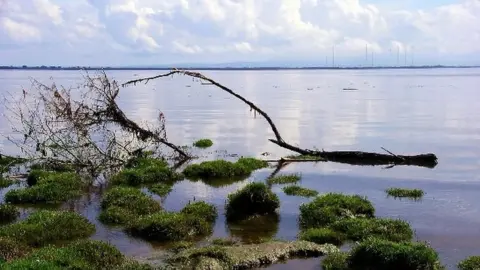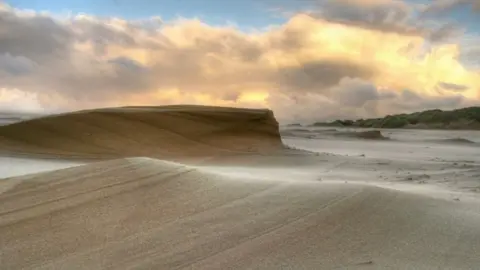New sites given special status to protect marine life
 Getty Images
Getty ImagesFour new sites have been designated as Marine Protected Areas (MPAs) to give extra security to some of Scotland's most vulnerable species and habitats.
Minke whale, basking sharks and Risso's dolphins will be among a range of animals to be safeguarded.
The areas include north-east Lewis, Sea of the Hebrides, Shiant East Bank and Southern Trench.
The designation aims to protect habitats from marine industry projects and some types of fishing.
Shiant East Bank is a stretch of water between the Outer Hebrides and the mainland, while the Southern Trench stretches from Buckie to Peterhead off the Aberdeenshire coast.
A further 12 sites have been given Special Protection Area status (SPA), giving additional protection to Scotland's vulnerable marine birds including sea ducks, divers and grebes.
The Sea of Hebrides is the largest of the new MPAs and includes habitat visited by basking sharks.
The sharks, the world's second largest fish, arrive off Scotland in summer from waters around Madeira and the Canary Islands off west Africa.
In October, Europe's largest MPA came into force for an area of deep sea off the Western Isles.
The West of Scotland MPA involves an area of more than 38,610 sq miles (100,000 sq km) in the north-east Atlantic. Coral reefs and deep-sea sharks are among the wildlife found at depths of 2,500m (8,202ft).
Almost 40% of Scotland's seas are now covered by MPAs.
The new SPAs are the Solway Firth, seas off St Kilda and Foula, the Moray Forth, an area involving the Ythan Estuary, Sands of Forvie and Meikle Loch, the Outer Firth of Forth and Outer St Andrews Bay complex, Bluemull and Colgrave Sounds, East Mainland Coast Shetland, Sound of Gigha, Coll and Tiree, Rum and the west coast of the Outer Hebrides.
 Lynne Kirton
Lynne KirtonIt brings the total number of locations subject to marine protection measures to 230, covering around 227,622 square kilometres - 37% - of Scotland's seas.
Holyrood's Natural Environment Minister Mairi Gougeon said: "Not only are our seas fundamental to our way of life, they provide habitats for a hugely diverse range of marine wildlife and it is vital that we ensure appropriate protection for them.
"Scotland's waters are home to many unique species and these designations ensure our MPA network is fully representative of our marine diversity, exceeding the proposed international target to achieve 30% of global MPA coverage by 2030."
 Martyn Gorman
Martyn GormanNatural conservation charities welcomed the latest MPAs and SPAs, although RSPB Scotland raised concerns over why sites around Orkney were not included.
Alex Kinninmonth, head of marine policy at RSPB Scotland, said: "We certainly welcome the protected areas declared today but any joy is tempered by what is missing in Orkney.
"We are requesting urgent clarity from the minister on her intentions, as we are at a loss to understand why after receiving robust scientific advice from her nature advisers supporting the sites, she has chosen to add yet further delay and uncertainty."
'Important step'
The National Trust for Scotland said it was pleased with the seas around St Kilda being designated as an SPA, but also raised concerns about the status of Orkney's waters.
Charities have been campaigning for these new protections to be introduced, with the Scottish Wildlife Trust and the Marine Conservation Society joining forces in 2019 to support the creation of the Sea of Hebrides MPA.
Susan Davies, chief executive of the Scottish Seabird Centre, added: "This is a huge and important step towards halting and reversing the decline of some of Scotland's important seabird species, especially the Forth's enigmatic puffin population, guillemots feeding in the seas north of St Kilda, and the long-tailed ducks wintering on the coastline of the Moray Firth."